Easter, or Semana Santa as it’s known locally, is Spain’s most important religious festival. The celebrations date back to the sixteenth century, and include sombre processions with ornate floats commemorating Jesus Christ’s arrival in Jerusalem, crucifixion, burial, and resurrection.
The most famous Easter Week celebrations take place in Andalucia, in southern Spain. However, cities throughout Spain, including Barcelona, also hold processions, church services, and other rituals.
In this post, we take a look at the best things to see and do in Barcelona during Easter. In addition to detailed information about Easter processions and traditions, I’ve also included recommendations for where to stay and other things to see and do at this time of year.
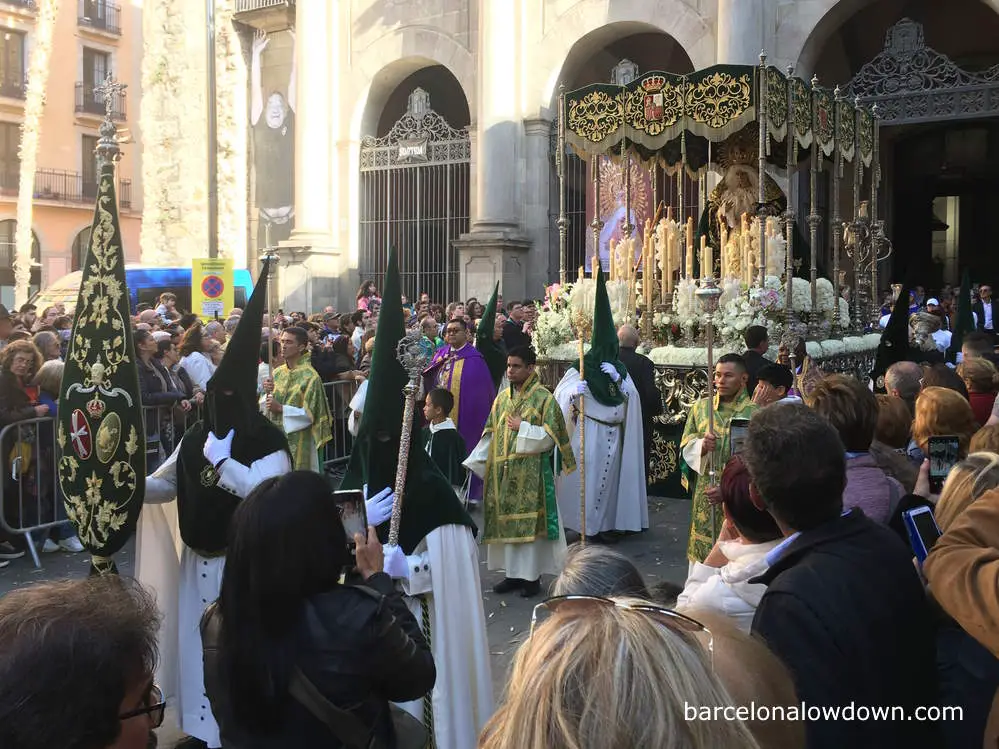
When is Easter 2025?
The dates of Easter change each year and typically fall between late March and mid-April. Easter Sunday is the first Sunday after the Paschal full moon, which is the first full moon after the Spring Equinox.
Easter celebrations in Barcelona start on Palm Sunday, one week before Easter Sunday and end on Easter Monday. The main processions take place on Palm Sunday and Good Friday.
Good Friday, Easter Sunday, and Easter Monday are public holidays in Barcelona.
The table below shows the dates of Easter Week in Barcelona in 2025.
| Palm Sunday | April 13th |
| Maundy Thursday | April 17th |
| Good Friday | April 18th |
| Easter Saturday | April 19th |
| Easter Sunday | April 20th |
| Easter Monday | April 21st |
Where to stay in Barcelona during Easter
The Easter processions in Barcelona take place in the Gothic Quarter, in the area nearest to Barcelona Cathedral. There are plenty of hotels in this part of the city, including Hotel Barcelona Cathedral and Hotel Jazz, which are both on my list of the best value hotels in Barcelona.
Even if you aren’t planning to see the parades, hotels in this area are still a good choice because they are centrally located and close to many of Barcelona’s main sights.
Easter is a busy period in Barcelona, and the best value hotels book up several months in advance. This is where Booking.com comes in handy since many of the hotels listed offer free cancellation, allowing you to book early and then cancel or modify your booking if your plans change.
Easter Processions in Barcelona 2025
The following is a guide to the key Holy Week parades in Barcelona in 2025. I’ve included information about when the processions happen and their expected routes based on previous years. Wherever possible, I’ve included links to the relevant websites where you can double-check everything when making plans.
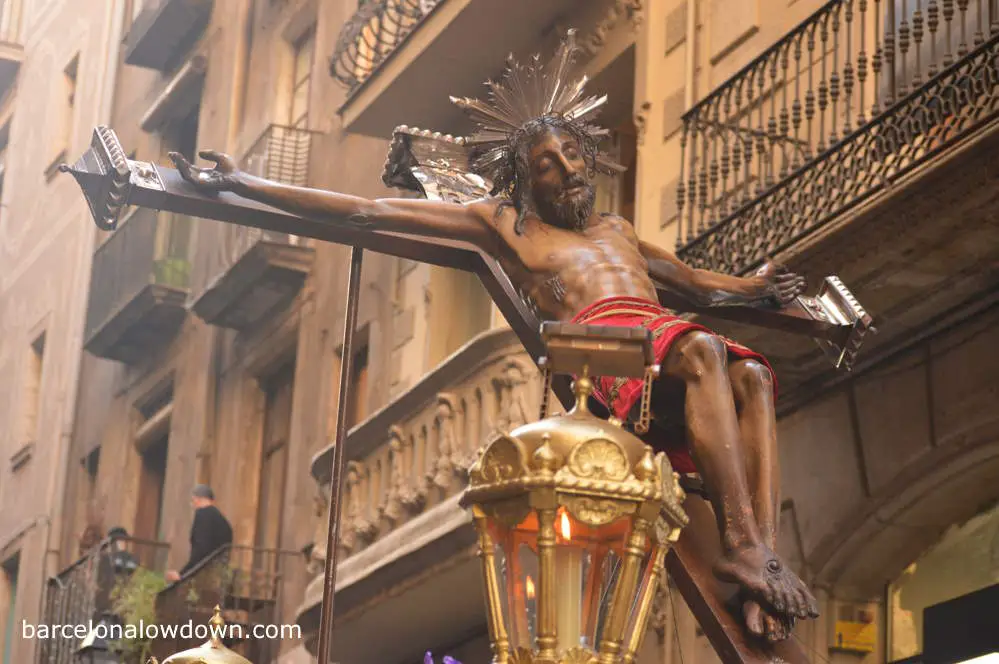
Palm Sunday (April 13th)
Processó de la Burreta
The parade of la Burreta represents the arrival of Jesus Christ in Jerusalem and begins at 10:00 am on Palm Sunday. The parade starts and ends at la Parroquia de Sant Agustí (Plaza Sant Agustí, 2) in the Raval neighbourhood and makes its way along Carrer de l’Hospital, La Rambla, Carrer de Santa Ana, Av. del Portal de l’Àngel, Carrer de la Cucurulla, Carrer de la Portaferrissa and La Rambla before returning along Carrer de l’Hospital.
Processó de la Bona Mort
The Processó de la Bona Mort begins at 6:00 pm at la Parroquia Major de Santa Anna (Carrer de Santa Anna, 29) in the Gothic Quarter and proceeds along Carrer de Santa Ana, Portal de l’Àngel, Plaça Nova, Avinguda de la Catedral, Carrer dels Boters, Plaça del Pi, Carrer Petritxol, Carrer de la Portaferrissa and La Rambla before returning along Carrer de Santa Ana.
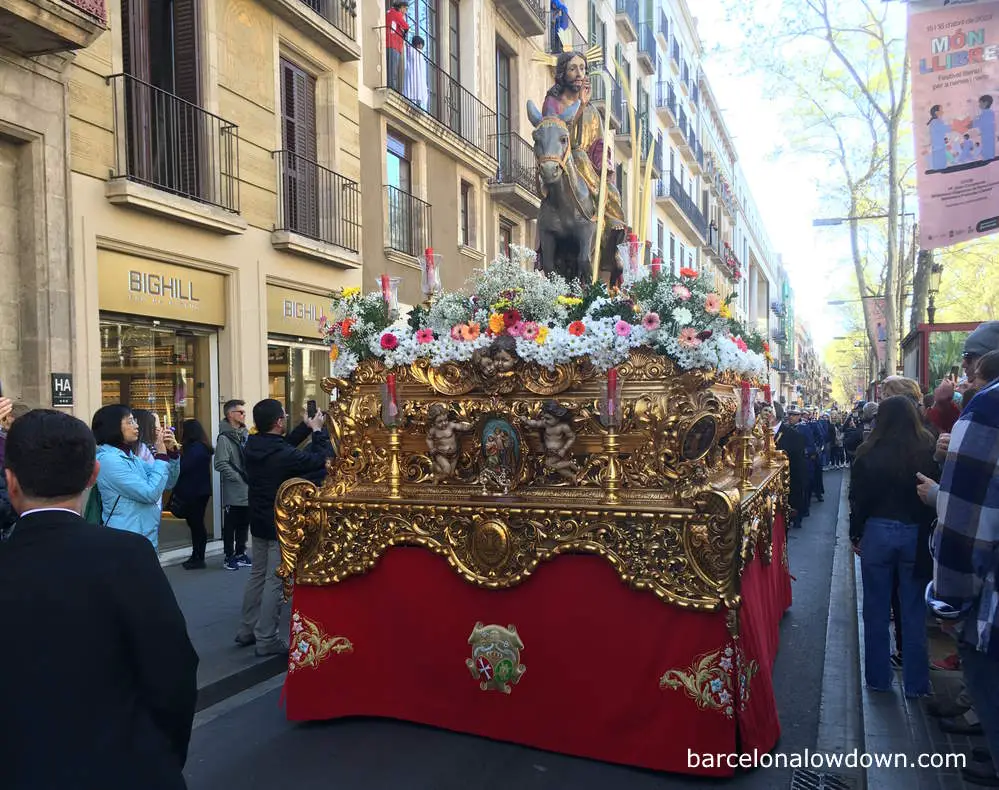
Maundy Thursday (April 17th)
Via Crucis de la Sang
The Via Crucis de la Sang parade starts from the Basilica de Santa Maria del Pi (Plaza del Pi, 7) in the Gothic Quarter at 9:00 pm and continues along Carrer de la Palla, Carrer dels Banys Nous, Carrer del Call, Plaça Sant Jaume, Carrer del Bisbe, Carrer de la Pietat, Plaça de Sant Iu, Pla de la Seu, Carrer de Santa Llúcia, Carrer del Bisbe, Plaça de Cucurulla before returning to the Basilica de Santa Maria del Pi.
Good Friday (April 18th)
Processó de la Mare de Déu de les Angoixes
The Processó de la Mare de Déu de les Angoixes starts from the Església de Sant Jaume (Carrer de Ferran, 28) in the Gothic Quarter at 6:30 pm and makes its way along Carrer de Ferran, Plaça Sant Jaume, Carrer del Bisbe, Avinguda de la Catedral, Carrer dels Boters, Carrer del Pi, Plaça del Pi, Carrer del Cardenal Casañas, La Rambla before returning along Carrer de Ferran to the Església de Sant Jaume.
Processó de Nostre Pare Jesús del Gran Poder i María Santíssima de l’Esperança Macarena
This procession starts from la Parroquia de Sant Agustí (Plaza Sant Agustí, 2) in the Raval neighbourhood at 5:00 pm and makes its way along Carrer de l’Hospital, La Rambla, La Rambla, Santa Ana, Portal de l’Àngel, Arcs, Plaça Nova, Avinguda de la Catedral, Carrer dels Boters, Carrer del Pi, Plaça del Pi, Carrer del Cardenal Casañas, before returning along La Rambla and Carrer del Hospital to la Parroquia de Sant Agustí.
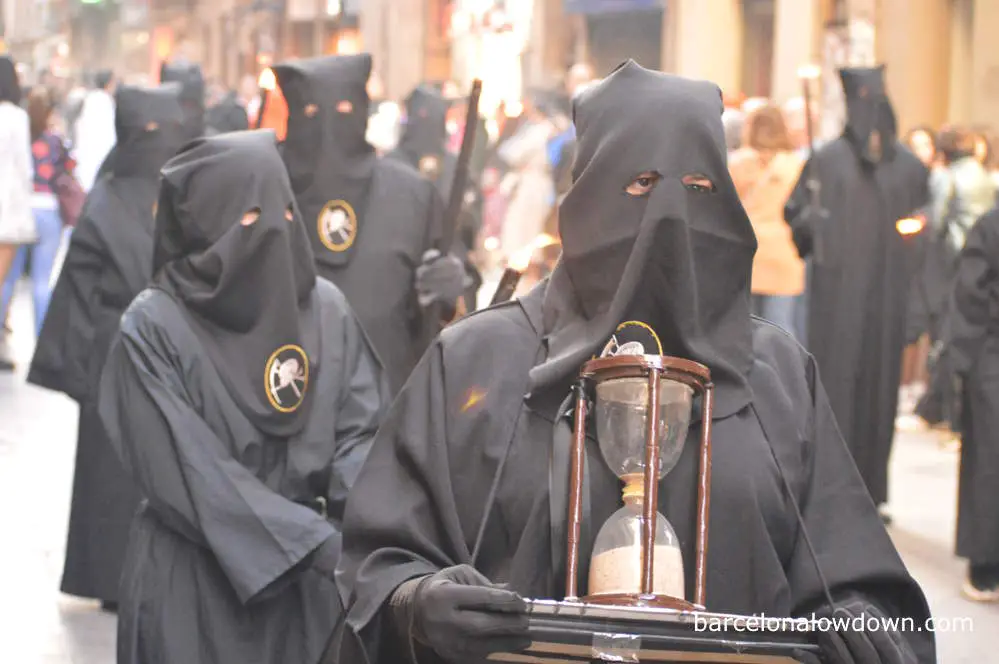
English language church services in Barcelona
In addition to the traditional Easter week parades, English language Mass is held in several churches in Barcelona during Semana Santa, most notably at the Sagrada Família and the Basilica de Santa Maria del Mar. Non-Catholics are welcome at these services, although you shouldn’t receive the Holy Communion if you aren’t a Catholic.
Easter illuminations at the Sagrada Família
Since 2023, there has been a light show representing the Passion of Christ at the Sagrada Familia on the days leading up to Easter.
| Date | Time |
| Sunday, April 13th | 20:00 – 22:15 |
| Monday, April 14th | 20:00 – 22:15 |
| Tuesday, April 15th | 20:00 – 22:15 |
Other Easter Traditions in Barcelona
Apart from the Semana Santa processions, several other curious Easter traditions are worth checking out while you are here.
Blessing of the Palms
On the morning of Palm Sunday, you will see lots of families out and about with children carrying decorations made from dried palm leaves. These are palmons or palmes, which the children take to the nearest church to get blessed in a ceremony called the Blessing of the Palms. They represent the palm trees that flanked Jesus’s path on his way to Jerusalem.
Traditionally, the palms are presents from the child’s godparents and can be purchased from stalls outside Barcelona Cathedral, the Sagrada Família and La Rambla de Catalunya in the days leading up to Palm Sunday.
If you want to witness or participate in a Blessing of the Palms celebration, they take place outside most parish churches in Barcelona at around midday on Palm Sunday.
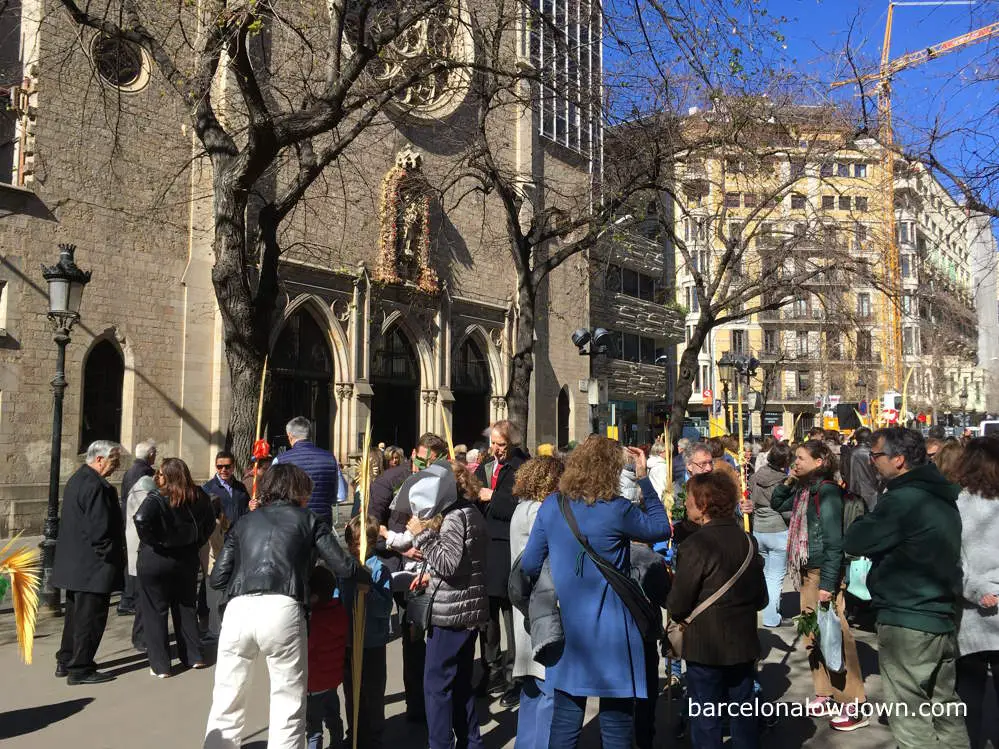
During religious holidays, people often celebrate with traditional foods and sweets made specifically for the occasion. In Barcelona, Easter is celebrated with no less than four traditional foods.
La Mona de Pasqua
La Mona de Pasqua is a cake which is gifted by godparents to their godchildren at easter and is traditionally eaten after lunch on Easter Monday.
Originally, they were simple sponge cakes decorated with hard-boiled eggs. Over the years, the cakes have become more elaborate, and the boiled eggs have been replaced by chocolate figurines representing children’s favourite cartoon characters or football players.
In the weeks leading up to Easter, cake shops throughout the city fill their windows with elaborate chocolate Monas. For more elaborate chocolatey creations, check out the Barcelona Chocolate Museum, which is located in the El Born neighbourhood.
Torrijas
Torrijas is a popular dessert that is similar to French toast and is traditionally enjoyed throughout Spain during Easter. To make Torrijas, thick slices of bread are soaked in milk and then coated with beaten eggs before frying. Once cooked, they are drizzled with honey and cinnamon.
These delicious calorie bombs date back to medieval times when monks and nuns ate them to help get them through the forty days of fasting prior to Easter.
Bunyols de Quaresma
Bunyols de Quaresma is another sweet item which is traditionally consumed in Catalonia in the runup to Easter. Similar to Torrijas, Bunyols de la Quaresma are another sugary treat designed to get the faithful through a period of fasting.
Bunyols can be compared to mini doughnuts with a touch of aniseed and are available at bakeries throughout the city in the days leading up to Easter.
Calçots
Although not strictly an Easter tradition, calçots are a seasonal vegetable, similar to leeks or spring onions, that are eaten in Barcelona and are available from January until April. Although traditionally eaten in the open air, at barbeques outside the city centre, you will also find restaurants that offer a calçotada.
As you will see in my post about the Catalan Calçotada, eating calçots is a messy business, which involves dipping them in delicious Romesco sauce before consuming them whole. Most restaurants which serve calçots provide their guests with disposable plastic gloves and bibs!
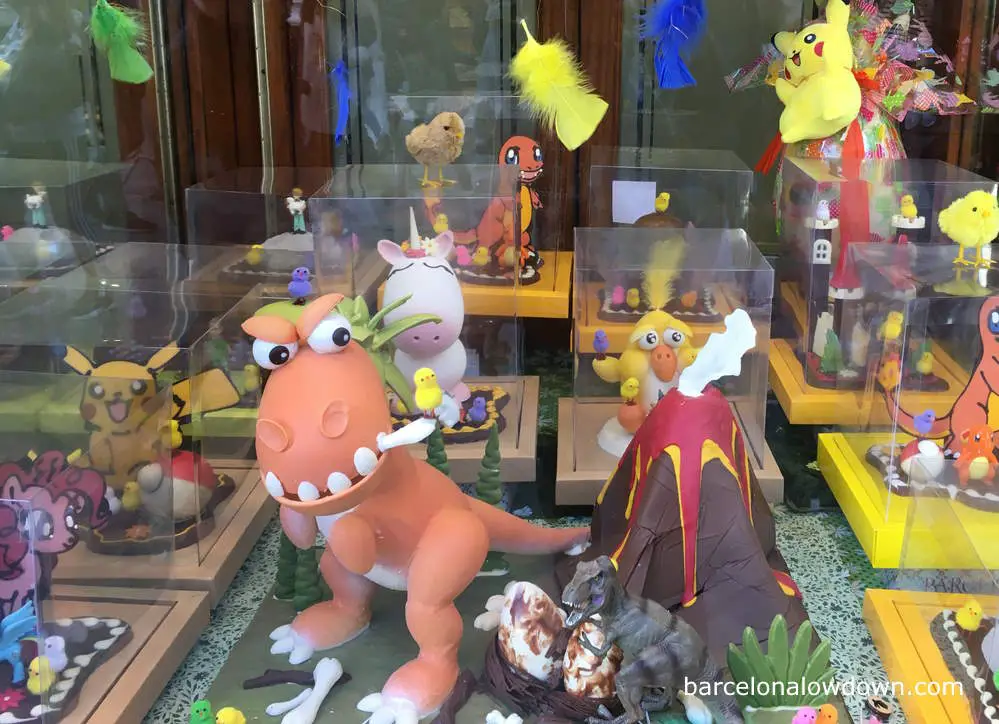
Other things to see and do in Barcelona at Easter
In addition to the parades and other traditions, Easter is a great time to visit Barcelona. The weather is typically good, and although it may not yet be hot enough for lying on the beach, it’ll certainly be a lot better than back home.
This section highlights six of the top attractions and activities to experience in Barcelona, along with essential information to keep in mind if you’re visiting during Easter. If you’re looking for additional suggestions for things to do in Barcelona, be sure to check out this post.
Easter is a popular time to visit Barcelona, and most attractions are busier than usual. In addition to the main attractions, such as La Sagrada Familia and the Picasso Museum where booking in advance is always advisable, if there are other attractions you are particularly interested in visiting, I recommend purchasing tickets in advance.
1. La Sagrada Família
Visiting Gaudi’s unfinished masterpiece, the Sagrada Familia, is a must-do on any Barcelona itinerary. The basilica remains open to visitors during Easter but with a limited schedule to accommodate Easter services. To avoid disappointment, it’s essential to book your tickets in advance.
2. The Gothic Quarter
The Gothic Quarter is Barcelona’s historic city centre which dates back to the times of the Roman Empire more than two thousand years ago. An enticing maze of narrow streets flanked by ancient buildings, the Gothic Quarter is where many of Barcelona’s most important historical sites are located, including Barcelona Cathedral, the Jewish Quarter and the Bishop’s Bridge, not to mention numerous picturesque plazas, just waiting to be discovered.
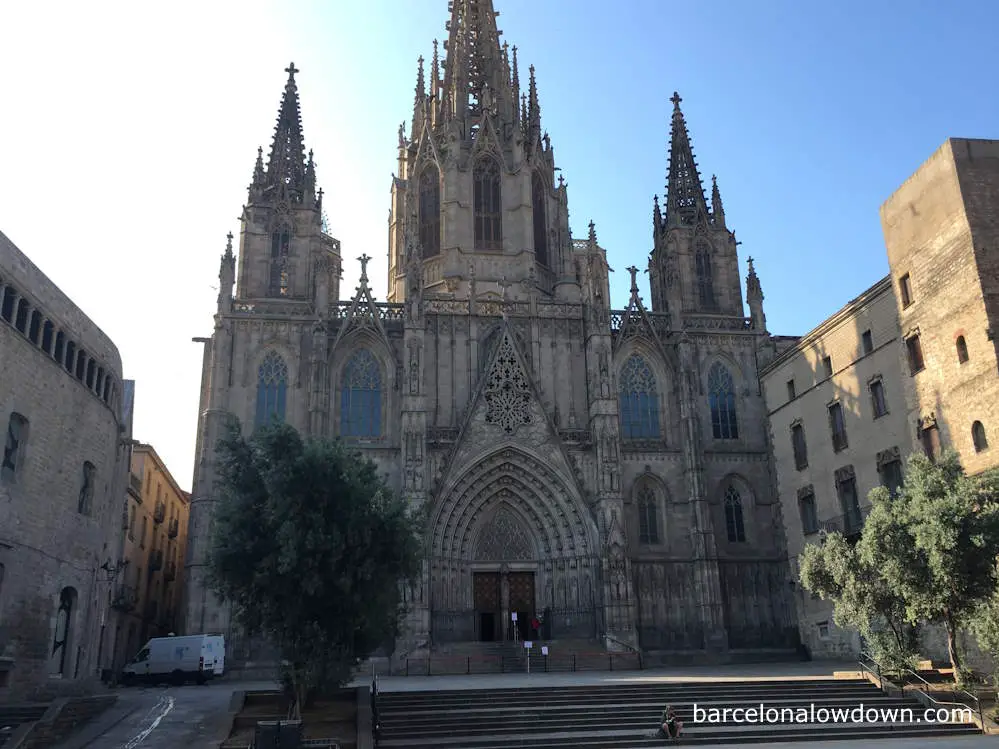
3. Passeig de Gràcia, La Pedrera and Casa Batlló
Next on the list of things to do is Barcelona’s most elegant street, Passeig de Gràcia. This is where, at the start of the twentieth century, Barcelona’s richest businessmen contracted the city’s top architects to create lavish townhouses. Stars of the show are La Pedrera and Casa Batlló, which were designed by Antoni Gaudí. Both houses are open as usual at Easter; you can save time by booking a combined ticket to visit both.
4. La Rambla
La Rambla, or Les Rambles, is a wide pedestrian boulevard which runs all the way from Plaça de Catalunya to the Port Vell harbour area. Although it’s sometimes shunned for being too touristy, walking down La Rambla is an essential part of any Barcelona itinerary. To enjoy the Rambla at its best, try and get here early in the morning before it gets too crowded and, for the best views, take the elevator to the top of the Columbus Monument.
5. La Boqueria Food Market
El Mercat de la Boqueria is a well-known food market in the Raval area of Barcelona, just off La Rambla. The market is replete with stalls selling a variety of colourful fruits and vegetables, cured Spanish ham, and other food items. In addition, there are numerous bars and restaurants located within the market.
If you’re planning a trip to Barcelona during Easter, keep in mind that the market remains closed on Good Friday, Easter Sunday and Easter Monday and plan your schedule accordingly.
6. La Carretera de les Aigües
After indulging in Easter treats like Monas de Pascua and Torrijas, it’s time to work off those extra calories with some exercise. La Carretera de les Aigües is an easy hiking trail in the hills overlooking Barcelona. In addition to offering fantastic views of the city, the footpath is almost completely flat, which makes it suitable for families and walkers of all ages. If you fancy something a little more challenging, then The Three Hills Walk is another popular route with excellent views.
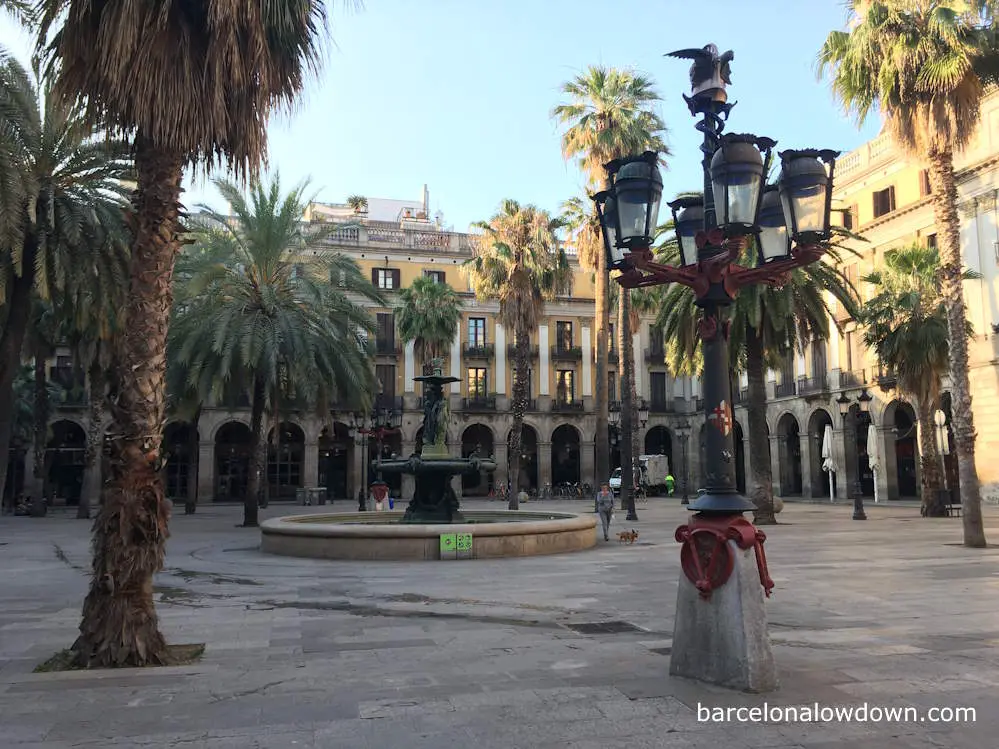
FAQs, information and tips
Below are some commonly asked questions, tips, and other useful information to assist you in planning your Easter holiday in Barcelona. If there is anything I’ve missed, or if you have any questions, please feel free to leave a comment at the end of the post, and I’ll get back to you as soon as I can.
Are there processions in Barcelona during Easter?
Several processions take place in Barcelona during Easter Week. Although they are smaller than the famous Semana Santa parades, which are held in Seville in southern Spain, they are still worth seeing. The most important processions take place on Palm Sunday and Good Friday.
Can tourists take part in the Easter parades?
Although visitors are welcome to watch the processions, it isn’t possible to actually join in with the Easter parades, which are organized by groups called cofradías and are prepared months in advance. However, English language Mass is celebrated at several churches and cathedrals where visitors are welcome. Likewise, if you were to purchase palmones for your children, I’m sure they would be welcomed at any of the Blessing of the Palms services, which take place at churches throughout the city.
Do shops and restaurants open at Easter?
Good Friday, Easter Sunday, and Easter Monday are public holidays in Barcelona, and you can expect most shops and markets to be closed, although there are plenty of small convenience stores that remain open throughout the city. Bakeries may also open, although on a reduced schedule. The Maremagnum shopping centre in the Port Vell harbour also opens as usual. Most restaurants in the city centre will open as usual, although it’s worth checking their schedules online as they may close earlier than usual.
Are the main tourist attractions open at Easter?
Barcelona’s major tourist attractions are open over Easter, although some may operate on a different schedule. Most notably, many of the museums close earlier than usual on Easter Sunday, and some museums which are normally closed on Mondays will open. As mentioned earlier in the post, Easter is a busy time in Barcelona and it’s a good idea to make reservations in advance.
Does the Barcelona Metro operate over Easter?
The Metro operates an extended schedule over the easter weekend, although the frequency of trains is slightly lower than usual.
| Day | Schedule |
| Maundy Thursday | 05:00 – 02:00 Friday |
| Good Friday | 05:00 – 02:00 Saturday |
| Easter Saturday | 05:00 – 02:00 Monday |
| Easter Sunday | Non-stop until 02:00 Monday |
| Easter Monday | 05:00 – 24:00 |

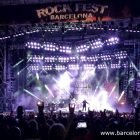
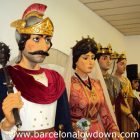
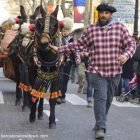
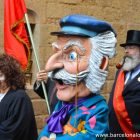
Hello,
We will be in Barcelona for Easter 2024 and my Mom is hoping to go to an English mass. I don’t see where we can find one. I looked at the links above for La Familia Sagrada and La Basilica Santa Maria del mar, but don’t see a mass schedule. Also, do we need to purchase tickets for mass?
Hi Heidi,
It’s too early for the Easter schedules to be available yet, I recommend you check the links again a week or two before Easter.
International masses (in English and other languages) normally take place at the Sagrada Familia on Sundays and religious holidays at 9 am and every Saturday at 8 pm.
You don’t have to purchase tickets to attend mass, nor book in advance, but the number of places is limited. To ensure a place, you should be at the entrance to the Sagrada Familia at least half an hour before mass is due to start.
My tour company is suggesting we stay at Hotel SB Plaza Europa. We will be in Barcelona for a few days around Easter 2024.
Your thoughts on this Hotel would be appreciated! Thanks.
Hi Lauren,
Assuming that you’re visiting Barcelona on holiday, then I wouldn’t recommend Plaza Europa due to the location. It’s outside Barcelona in an area where there’s a large conferece centre and with office buildings and an industrial area nearby.
It would probably be a good choice if you were attending an event at the “Fira” conference centre and the hotel itself does get good reviews, but I imagine that most of the guests are here on buisness, for conventions etc. and not visiting the city as tourists.
Once again, assuming you’re here to visit Barcelona, then I’d look for somewhere near to Plaça de Catalunya. For example Hotel Barcelona Cathedral is a very nice hotel at a similar price and which is located within walking distances of many of the main attractions. There are also plenty of restaurants within walking distance.
If you are interested in seeing the Easter processions etc. they also take place nearby.
It’s your decision obviously, but if you’re only here for a few days I think it’s best to stay central, and not have to be continually taking taxis or public transport.
I recommend you take a look at this post which will give you a better idea of the different areas.
If you’ve any more questions, or if there are any other hotels that you’re considering, feel free to ask.